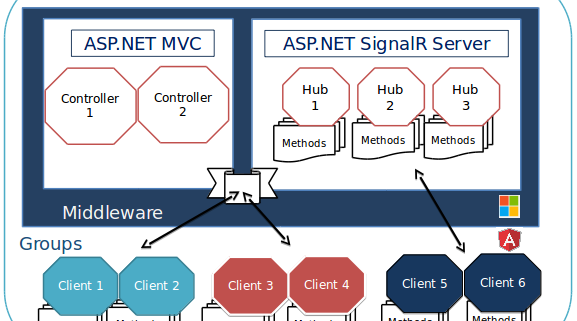Showcasing .NET Core
.NET Core is a powerful, cross-platform framework for building modern, cloud-based, and high-performance applications. In this blog, we will walk through a real-time example to demonstrate its capabilities and showcase how it can solve real-world business challenges.
Use Case: Real-Time Inventory Management System
Imagine a retail client who wants to track their inventory across multiple locations in real time. They need an application that can:
- Synchronize inventory data across stores.
- Provide insights into stock levels.
- Alert store managers when stock levels fall below a threshold.
- Be scalable and accessible on different devices.
Using .NET Core, we can design and develop such an application. Here’s how:
Step 1: Setting Up the Environment
To begin, we’ll set up a .NET Core environment:
- Install the latest version of the .NET Core SDK from Microsoft’s website.
- Create a new project using the command line:dotnet new webapi -n InventoryManagementcd InventoryManagement
Step 2: Designing the Architecture
Our application will use the following architecture:
- Frontend: A responsive Angular or React web app for user interaction.
- Backend: .NET Core Web API to handle business logic.
- Database: SQL Server for data storage.
- Real-Time Updates: SignalR for pushing real-time inventory updates to clients.
- Cloud Hosting: Azure App Service for scalability.
Step 3: Building the Backend
Creating the Data Model
We’ll define a simple inventory model in C#:
public class InventoryItem
{
public int Id { get; set; }
public string Name { get; set; }
public int Quantity { get; set; }
public string Location { get; set; }
}
Setting Up the API Endpoints
We’ll create CRUD (Create, Read, Update, Delete) endpoints for managing inventory items. For example, here’s the endpoint to fetch all inventory items:
[ApiController]
[Route(“api/[controller]”)]
public class InventoryController : ControllerBase
{
private readonly List<InventoryItem> _inventory = new();
[HttpGet]
public IActionResult GetAll()
{
return Ok(_inventory);
}
}
Implementing Real-Time Updates with SignalR
SignalR allows us to broadcast inventory updates. Here’s an example of a SignalR hub:
public class InventoryHub : Hub
{
public async Task NotifyUpdate(InventoryItem item)
{
await Clients.All.SendAsync(“ReceiveUpdate”, item);
}
}
Step 4: Developing the Frontend
Using Angular, we can create a dashboard to display real-time inventory updates. We’ll integrate SignalR to receive updates:
import { HubConnection, HubConnectionBuilder } from ‘@microsoft/signalr’;
@Component({
selector: ‘app-inventory’,
templateUrl: ‘./inventory.component.html’
})
export class InventoryComponent {
private hubConnection: HubConnection;
inventoryItems: InventoryItem[] = [];
constructor() {
this.hubConnection = new HubConnectionBuilder()
.withUrl(‘https://yourapi.com/inventoryHub’)
.build();
this.hubConnection.on(‘ReceiveUpdate’, (item: InventoryItem) => {
// Update inventory list
});
this.hubConnection.start();
}
}
Step 5: Hosting on Azure
We’ll deploy the backend and frontend to Azure App Services:
- Create a new App Service instance for the API and frontend.
- Use Azure SQL Database for managing inventory data.
- Configure SignalR using Azure SignalR Service for scaling real-time updates.
Benefits for the Client
- Scalability: The app can handle increasing numbers of stores and inventory items.
- Real-Time Updates: Store managers get immediate notifications of inventory changes.
- Cross-Platform Accessibility: Works on desktops, tablets, and mobile devices.
- Cost-Effective: Built using open-source tools and hosted on a scalable cloud platform.
Conclusion
This example demonstrates how .NET Core’s versatility and robust ecosystem can be leveraged to build real-time applications. By combining modern technologies like SignalR and Azure, businesses can achieve efficient, scalable, and user-friendly solutions.


Leave a Reply
Want to join the discussion?Feel free to contribute!